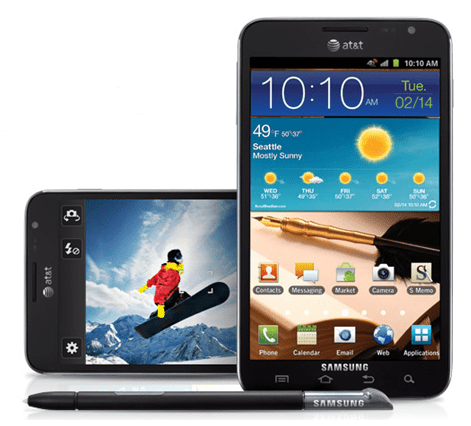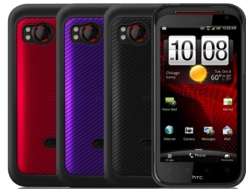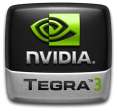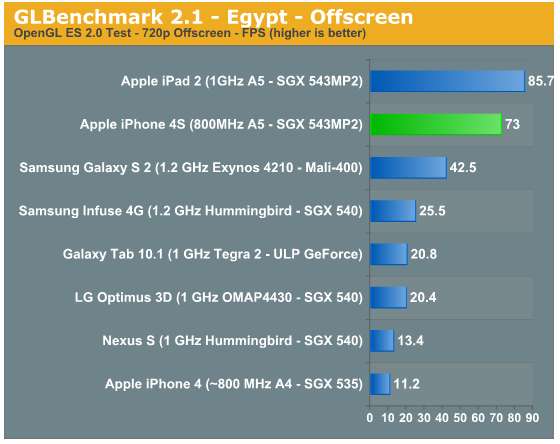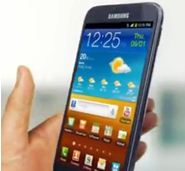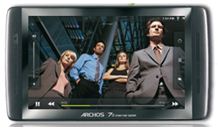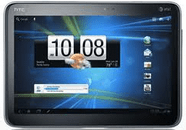Today’s Best Smartphones (February 2012)
January 30, 2012 Leave a comment
Since this article was first written, an updated version has been posted here. Check it out. A lot has changed.
And the Winners Are…
Back in December I created a chart of the top smartphones available at the time. Since then, a lot has happened, so I’ve updated my list. Here are the top five smartphones available today:
|
|
HTC Rezound |
LG Nitro HD |
Motorola Droid RAZR Maxx |
Samsung Galaxy Nexus |
Samsung Galaxy Note |
|
Processor |
1.5 GHz dual-core |
1.5 GHz dual-core |
1.2 GHz dual-core |
1.2 GHz dual-core |
1.5 GHz dual-core |
|
RAM |
1GB |
1GB |
1GB |
1GB |
1GB |
|
Storage |
16GB |
16+4GB |
16+16GB |
32GB |
TBD |
|
Screen size |
4.3” |
4.5” |
4.3” |
4.65” |
5.3” |
|
Resolution |
1280×720 |
1280×720 |
960×540 |
1280×720 |
1280×800 |
|
Pixel density |
342 ppi |
329 ppi |
256 ppi |
316 ppi |
285 ppi |
|
Rear cam |
8MP |
8MP |
8MP |
5MP |
8MP |
|
Front cam |
2MP |
1.3MP |
1.3MP |
1.3MP |
2MP |
|
Network |
LTE |
LTE |
LTE |
LTE |
LTE |
|
5GHz Wi-Fi |
No |
No |
No |
Yes |
Yes |
|
Bluetooth |
3.0 |
3.0 |
4.0 |
3.0 |
3.0 |
|
NFC |
No |
No |
No |
Yes |
Yes |
|
Thickness |
13.65mm |
10.4mm |
8.99mm |
9.47mm |
9.65mm |
|
Weight |
164g |
128g |
145g |
150g |
178g |
|
Battery |
1620 mAh |
1830 mAh |
3300 mAh |
1850 mAh |
2500 mAh |
|
OS |
Android 2.3.4 |
Android 2.3.5 |
Android 2.3.5 |
Android 4.0.2 |
Android 2.3.5 |
|
Carrier |
Verizon |
AT&T |
Verizon |
Verizon |
AT&T |
- Comments
- Although the Rezound is the thickest phone here, it has the highest pixel density, and a very fast processor. For now, it stays on the ‘best’ list.
- You could argue the Droid RAZR belongs in the above chart because it’s thinner and lighter than the RAZR Maxx, but battery life is such an important issue on LTE phones. The RAZR Maxx’s 3300mAh battery has 85% more current than the 1780mAh battery in the original RAZR. Even with the extended battery, the RAZR Maxx is still the thinnest phone in the above chart.
- Sprint will be releasing a Galaxy Nexus in the first half of this year that is rumored to have a 1.5GHz dual-core CPU, 2100mAh extended battery and a functioning Google Wallet. The original Galaxy Nexus is capable of supporting NFC, but Verizon blocks users from downloading the Google Wallet. Smart users know of a trick which allows Verizon users to download and install Google Wallet from the Android Market.
- Although the Galaxy Note became available in Europe last year, it’s rumored to go on sale here in the U.S. on February 19th.
Close, But No Cigar
You may have noticed that some phones which were included in my December list, have fallen by the wayside. This includes the iPhone 4S and several other phones which are still good, but no longer compare with the best phones. Each has at least one major flaw.
|
|
Apple iPhone 4S |
HTC Vivid |
Motorola Droid RAZR |
Motorola Droid 4 |
Samsung Galaxy S II Skyrocket |
|
Processor |
800MHz dual-core |
1.2 GHz dual-core |
1.2 GHz dual-core |
1.2 GHz dual-core |
1.5 GHz dual-core |
|
RAM |
512MB |
1GB |
1GB |
1GB |
1GB |
|
Storage |
16GB, 32GB, 64GB |
16GB |
16+16GB |
16GB |
16GB |
|
Screen size |
3.5” |
4.5” |
4.3” |
4.0” |
4.5” |
|
Resolution |
960×640 |
960×540 |
960×540 |
960×540 |
800×480 |
|
Pixel density |
326 ppi |
245 ppi |
256 ppi |
275 ppi |
207 ppi |
|
Rear cam |
8MP |
8MP |
8MP |
8MP |
8MP |
|
Front cam |
0.3MP |
1.3MP |
1.3MP |
1.3MP |
2MP |
|
Network |
HSPA |
LTE/HSPA+ |
LTE |
LTE |
LTE/HSPA+ |
|
5GHz Wi-Fi |
No |
No |
No |
No |
Yes |
|
Bluetooth |
4.0 |
3.0 |
4.0 |
4.0 |
3.0 |
|
NFC |
No |
No |
No |
No |
Yes |
|
Thickness |
9.3mm |
11.2mm |
7.1mm |
12.99mm |
9.40mm |
|
Weight |
140g |
177g |
127g |
179g |
132g |
|
Battery |
1420 mAh |
1620 mAh |
1780 mAh |
1785 mAh |
1850 mAh |
|
OS |
iOS 5.0 |
Android 2.3.5 |
Android 2.3.5 |
Android 2.3.5 |
Android 2.3.4 |
|
Carrier(s) |
AT&T, Verizon, Sprint |
AT&T |
Verizon |
Verizon 2/10 |
AT&T |
- Comments
- You could argue the Droid RAZR belongs in the first list because it’s thinner and lighter than the Maxx, but battery life is such an important issue with LTE phones that I favored the RAZR Maxx over the older Droid. It’s 3300mAh battery has 85% more current than the battery in the original Droid Razr.
- I debated whether the soon to be released Droid 4 belonged in the first chart, but it’s lacking a HD screen and it is one the thickest and heaviest of all of these phones. If you’ve just got to have a real keyboard, you might be willing to overlook these problems.
- I also debated whether the Galaxy S II Skyrocket belonged in the first chart, because it has such a fast processor. I left it out because it has the worst screen of any of the phones here.
- Windows Phone fans might ask why the Titan isn’t in this chart, because it has a 1.5GHz processor and a 4.7″ screen. I left it out because it doesn’t have a HD screen and the Titan II is just around the corner..
Why The iPhone 4S Is No Longer One of The Best
Some of you are probably wondering why the iPhone 4S is no longer listed in the chart of best smartphones. The answer is easy: The iPhone 4S hasn’t been competitive for a while. It has an under-clocked processor that runs at almost half the speed of the best Android phones. While it’s true the iPhone does well in some graphics-related benchmarks, the fastest Android phones kill it in side-by-side real world speed tests. If you want to see just how much faster the Droid RAZR is than the iPhone 4S, watch this video.The iPhone also doesn’t have a 720p HD display, and believe it or not, it’s not a real 4G phone. That means its data speeds are 5-10x slower than most 4G LTE phones. If you’re a hard-core Apple fan, you’ll probably buy the iPhone 4S anyway, and that’s O.K — just don’t say you weren’t warned. Two years is a long time to own a non-4G phone.
Several new quad-core phones will be demonstrated in Spain next month. As soon as new phones are released, I’ll update this chart.
If you think I missed a phone that should be considered, please let me know.
– Rick
Copyright 2012 Rick Schwartz. All rights reserved. Linking to this article is encouraged.
